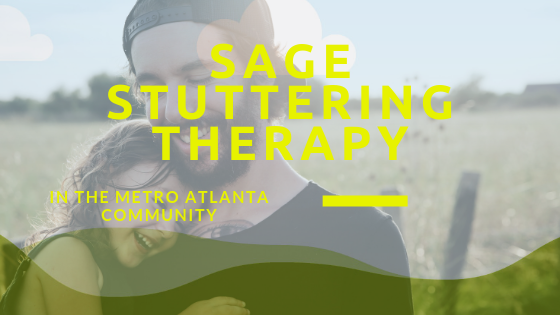Speech Therapy in Atlanta, Sandy Springs and Dunwoody, GA. Speak to a Pediatric Speech Therapist Now

What Are the Most Commonly Asked Stuttering Questions by Both Pediatricians and Families?

At SAGE, we are proudly visiting with local pediatricians over lunch, several times a year. These lunches allow SAGE to listen, then answer, the questions that our local pediatricians have and experience daily.
The most commonly asked questions by pediatricians in Atlanta, regarding stuttering, is “How can I tell the difference between a true stutter and developmental stuttering, which goes away on its own? Stuttering often presents in children between the ages of 3 and 6 years old. Before we treat a child for stuttering, we are looking for the following general characteristics; present for 3 months or more, sometimes gets better/worse for days/weeks at a time, family history of stuttering, more severe stutter types (such as blocks), secondary behaviors (such as eye blinks, facial tension, etc), and pervasiveness within conversational speech. Each case is different, and each child’s need and presentation should be considered carefully.
Signs and symptoms of stuttering include primary behaviors, such as
• monosyllabic whole-word repetitions (e.g., "Why-why-why did he go there?"),
• part-word or sound/syllable repetitions,
• prolongations of sounds,
• audible or silent blocking (filled or unfilled pauses in speech),
• words produced with an excess of physical tension or struggle.
These signs and symptoms are consistent with the diagnostic criteria for childhood-onset fluency disorder (stuttering) listed in the Diagnostic and Statistical Manual of Mental Disorders, 5th edition (DSM-5; American Psychiatric Association, 2013).
Frequency and severity of stuttering may fluctuate from day to day and in relation to the speaking situation. Stuttering is often more severe when there is increased pressure to communicate (e.g., competing for talk time, giving a report at school, interviewing for a job). Speech Therapy
Secondary, avoidance, or accessory behaviors that may impact overall communication include
• distracting sounds (e.g., throat clearing, insertion of unintended sound);
• facial grimaces (e.g., eye blinking, jaw tightening);
• head movements (e.g., head nodding);
• movements of the extremities (e.g., leg tapping, fist clenching);
• sound or word avoidances (e.g., word substitution, insertion of unnecessary words, circumlocution);
• reduced verbal output due to speaking avoidance;
• avoidance of social situations;
• fillers to mask moments of stuttering.
• articulation or phonological disorder (St. Louis & Hinzman, 1988; Wolk et al., 1993);
• language differences. Children who stutter score within or above the average range on tests of language ability (Watkins, Yairi, & Ambrose, 1999). However, children who stutter tend to show lower performance (although still within the average range) on standardized tests of receptive and expressive language and other language measures when compared with children who do not stutter (Anderson, Pellowski, & Conture, 2005; Ntourou et al., 2011); use significantly fewer verbs overall and fewer different verbs than those used by children who do not stutter (Wagovich & Bernstein Ratner, 2007); have more frequent use of irregular past-tense forms and a tendency to double-mark (e.g., "ranned") these forms when compared with verb use of children who do not stutter (Bauman, Hall, Wagovich, Weber-Fox, & Ratner, 2012); produce significantly more stutter-like disfluencies in narrative contexts than in conversational contexts (Byrd, Logan, & Gillam, 2012).
Children who stutter may show expressive language problems because of a tendency to avoid speaking. Avoidance can lead to less talking and reduced linguistic complexity (Silverman & Bernstein Ratner, 2002).
Sage Speech & Learning Associates offer professional speech therapy, language therapy and feeding therapy in Atlanta, Brookhaven, Sandy Springs, Dunwoody, Buckhead and surrounding areas.